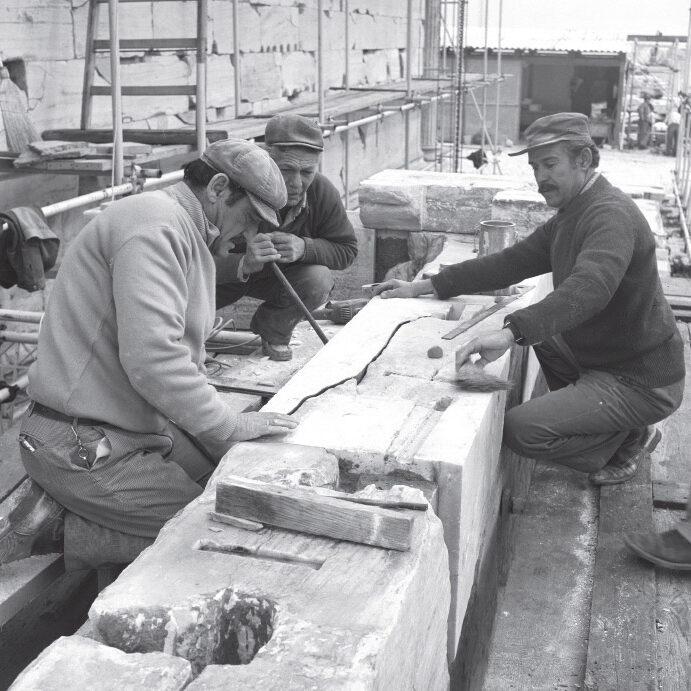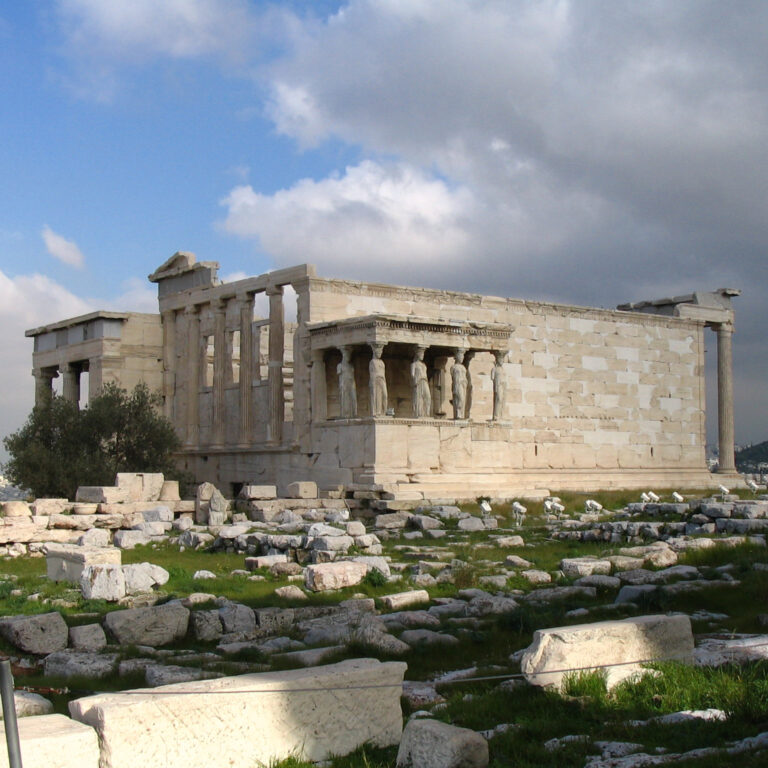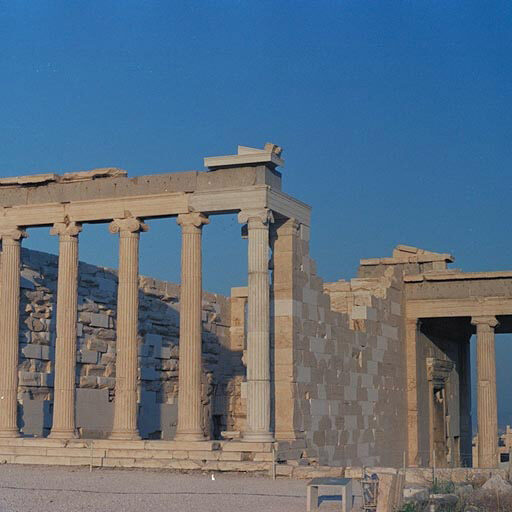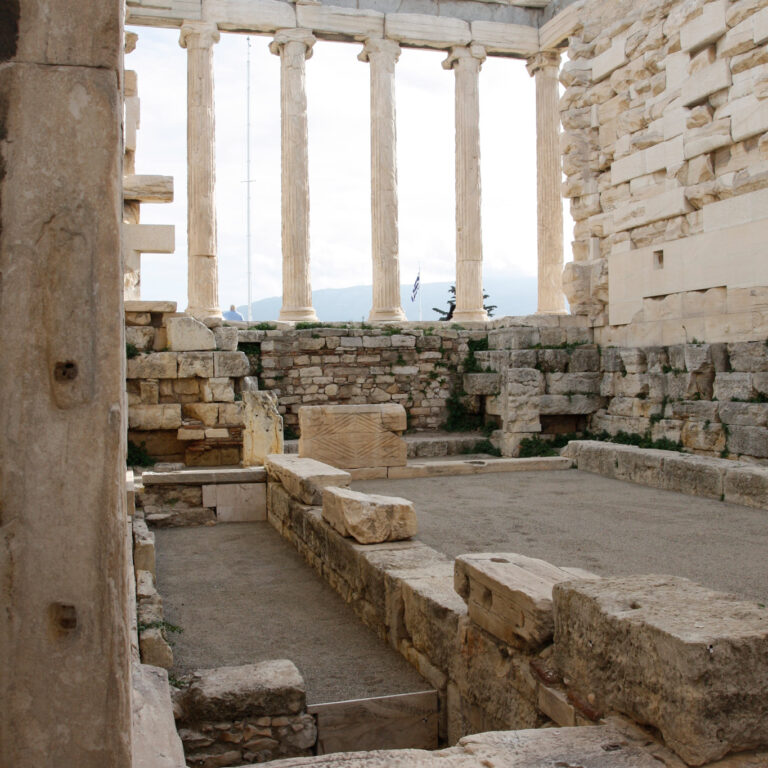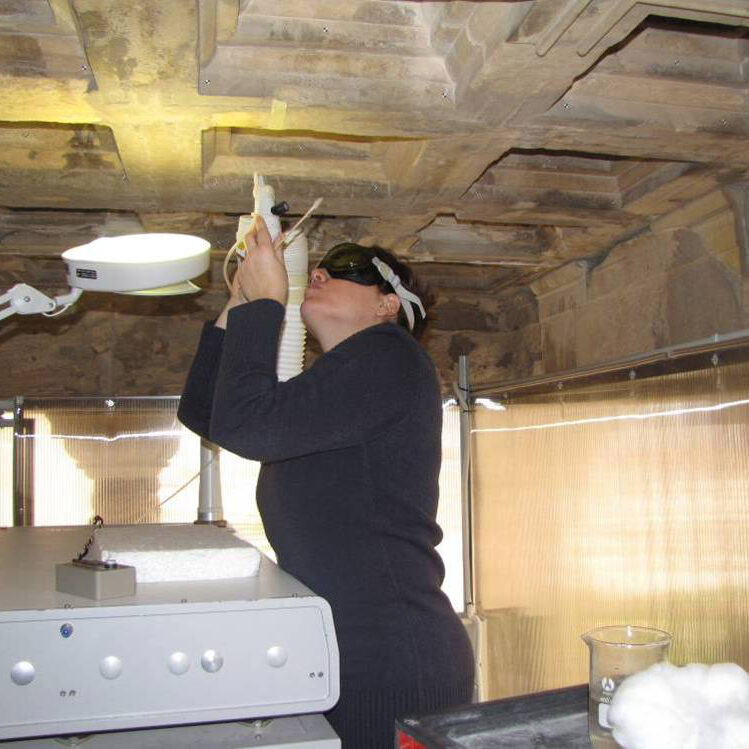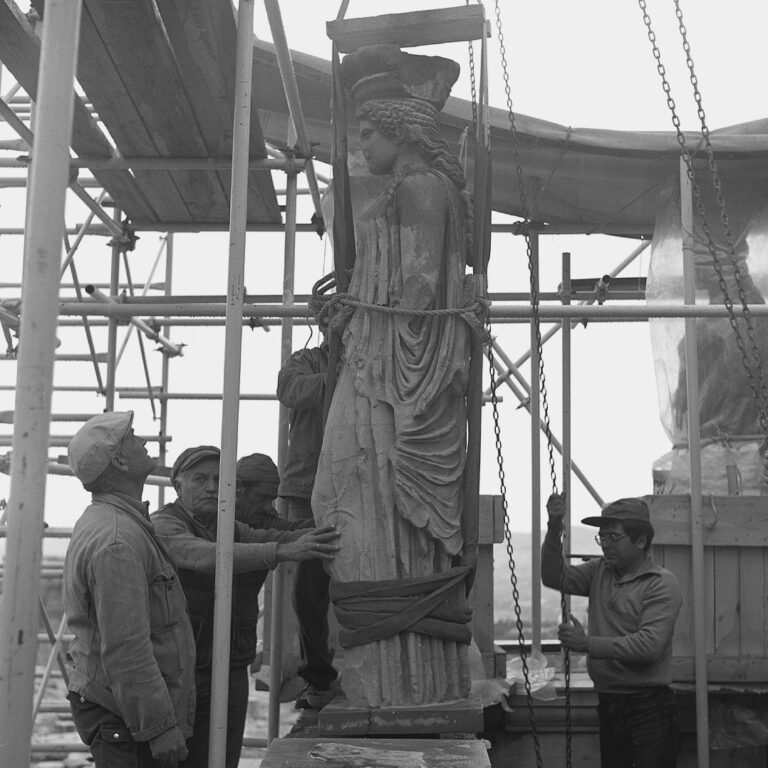
The restoration of the Erechtheion is the first restoration programme to have been completed, for which the Committee for the Conservation of the Acropolis Monuments was responsible. The intervention, the purpose of which was to correct the errors of the earlier restorations, was carried out between 1979 and 1987, by the late A. Papanikolaou, architect, and the civil engineer K. Zambas.
The work began with the transferal of the Caryatids to the Acropolis Museum, in order to protect them from atmospheric pollution. Following this, extensive parts of the monument were dismantled and, more specifically, the areas that had been restored in the past (north and south walls to the level of the orthostates, west wall to the level of the base of the engaged columns, ceilings of the north and south porches). A total of 720 members were dismantled. Removal of the rusted clamps and dowels was followed by structural restoration, using titanium instead of iron.
In the new reassembling of the monument, the members that had been set in the wrong positions were reset as they were in antiquity. As a result of this resetting of architectural members, there were gaps in the masonry of the monument’s walls, which have been filled in by members made entirely of new marble.
For reasons of static efficiency and morphological integrity of the main, east façade of the monument, copies in artificial stone were set in place of the north column and overlying entablature, which Lord Elgin had removed from the northeast corner of the monument. The six Caryatids that have been placed in the south porch of the monument are also copies in artificial stone.
The intervention is the first restoration of a monument to have been completed by the Committee for the Conservation of the Acropolis Monuments. It has been viewed favourably by the international scholarly community and has been widely acknowledged by the numerous visitors to the Acropolis.
During the period 2014-2015 works pending since 1986 were conducted in order to backfill part of the foundations in the interior of the Erechtheion. The goal of the intervention was to enhance the archaeological remnants of the Christian Basilica and to lay the inside of the monument out in such a way as to allow people to visit it.
The approved study (architectural study: K. Mamalougas and geotechnical study: D. Michalopoulou) required the backfill of the foundations by using specifically designed ground filters – to facilitate rainwater infiltration – and the relocation of architectural members from the Christian Basilica for educational reasons. The next stage of the study concerns the construction of a new, specially designed ramp, made of marble slabs laid on a medal grate, which will allow entrance and circulation of a limited number of visitors in the west part of the monument.
Conservation of the Erechtheion
The forms of deterioration which are observed on the Erechtheion are similar to those observed on all the Acropolis monuments, the chief characteristics being surface areas that are crumbling with a notable microbiological presence and networks of micro-cracks. This condition is a direct result of the interaction of many factors, such as the composition of the stone itself (e.g. aluminosilicate veins), natural destructive phenomena (for example weather conditions), acidic attack, violent destructions suffered by the monument (fires in antiquity, earthquakes) and the earlier interventions for restoration and consolidation. All this has resulted in the gradual alteration of the material and the diminishing of both morphology and geometry of its architectural members.
The Erechtheion has gone through repeated interventions for restoration and conservation. The most recent effort to conserve the surface of the monument systematically began in 1995 (under the supervision) of the ESMA, eight years after the completion of the structural restoration programme. The purpose of the present intervention is to consolidate the surface of the marble of the Erechtheion and, by so doing, to reinforce the monument’s longevity. The criteria for choosing which parts of the monument should undergo either systematic or preventive interventions are the extent, the intensity, the diversity of form and the pace of evolution of the decay. On the basis of these facts, the porch of the Caryatids, five columns of the east porch of the monument, the west part of the outer face of the north wall and the inner face of the south wall were chosen. The conservation of these areas of the monument has already been completed.. At the same time, preventive work was carried out on the threshold of the north doorway of the monument, the floor of the east porch, two beams of the ceiling of the north porch and on the ceiling of the south porch. Systematic interventions are being carried out on the south part of the inner and of the outer face of the west wall of the Erechtheion.


